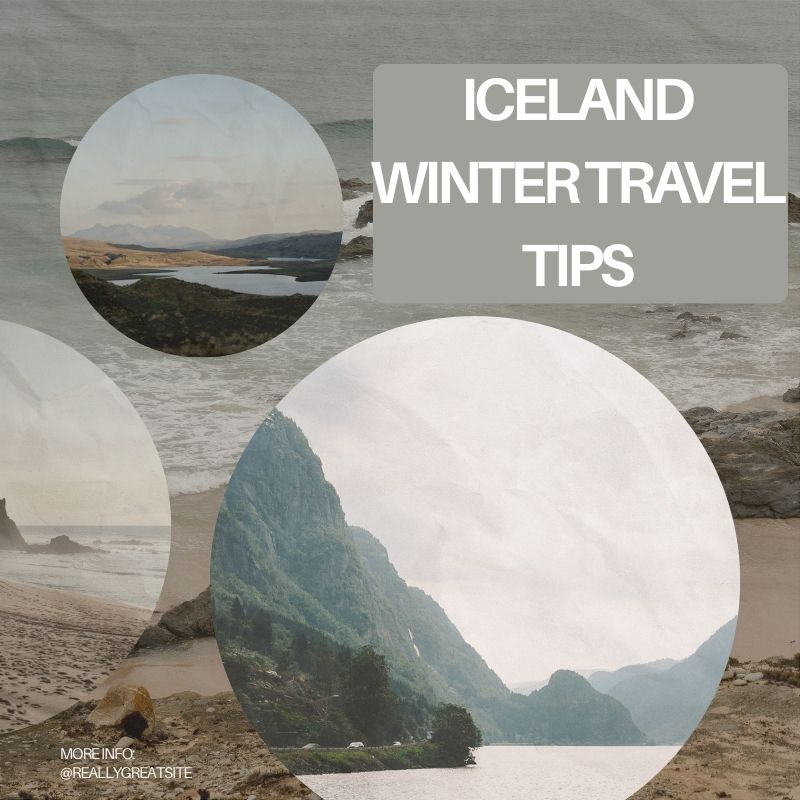Iceland in winter is one of the most magical destinations on earth. With snow-covered landscapes, dancing northern lights, and steaming hot springs, the country transforms into a wonderland between November and March. But winter travel here is very different from visiting in summer—short daylight hours, icy roads, and unpredictable weather can surprise even seasoned travelers. If you’re planning a trip, these Iceland travel tips for visiting in winter will help you stay safe, pack smart, and make the most of your adventure.
Iceland winter travel tips

If you’re planning a cold-season adventure, these Iceland winter travel tips will help you make the most of your trip. Winter in Iceland brings magical experiences like the northern lights, glacier hikes, hot springs, and festive traditions, but it also comes with challenges such as icy roads, limited daylight, and unpredictable weather.
1. What to Do in Winter in Iceland
Winter in Iceland offers unique experiences that you can’t enjoy in summer.
- See the Northern Lights: Clear nights give you the chance to witness the aurora borealis dancing in the sky.
- Explore Ice Caves: Only accessible in winter, crystal-blue ice caves are a must-see.
- Relax in Hot Springs: Warm up in the Blue Lagoon or natural hot pools.
- Glacier Hiking & Snowmobiling: Adventure lovers can join guided tours on Iceland’s glaciers.
2. What to Know Before Traveling in Winter
Traveling in winter requires preparation.
- Keep Your Plans Flexible: Weather changes quickly, and tours may be canceled due to storms.
- Daylight Will Be Limited: In December, Iceland gets as little as 4–5 hours of daylight. Plan activities accordingly.
- The Highlands Are Closed: Many interior roads are shut due to snow, so focus on coastal routes and guided tours.
3. Iceland Winter Weather Guide
Iceland’s winter is cold but manageable with proper clothing.
- November: Average temps around 0°C, first snow begins.
- December: -1°C to -5°C, darkest month with minimal daylight.
- January & February: Coldest months, expect icy roads and heavy snow.
- March: Longer daylight hours return, making it great for sightseeing.
Tip: Always check the weather forecast before heading out.
4. Winter Safety in Iceland
Safety is crucial when traveling in Iceland’s winter conditions.
- Wind Warning System: Strong winds can close roads or make driving dangerous. Follow alerts on SafeTravel.is
- Stick to Main Roads: Side roads may be impassable.
- Book Guided Tours for Adventures: Glacier hikes and ice caves are best done with professionals.
5. Essential Winter Packing Tips
Packing smart is key to enjoying Iceland’s winter.
- Layers are Everything: Thermal base layers, fleece mid-layers, and waterproof outerwear.
- Footwear: Insulated, waterproof boots with good grip.
- Accessories: Gloves, wool socks, hats, scarves, and crampons for icy sidewalks.
- Other Essentials: A reusable water bottle, power bank, and camera for the northern lights.
6. Driving in Iceland in Winter
Driving can be challenging but rewarding.
- Rent a 4×4 Vehicle: These cars handle snow and ice better.
- Check Road Conditions: Use Road.is
- for live updates.
- Drive Slowly and Safely: Black ice is common, especially at night.
If you’re nervous about driving, book a guided winter tour instead.
7. Best Winter Destinations in Iceland
Different regions of Iceland offer unique winter highlights:
- South Iceland: Famous waterfalls like Skógafoss, black sand beaches, and glacier tours.
- North Iceland: Akureyri and whale watching.
- West Iceland: Snæfellsnes Peninsula with stunning coastlines.
- Westfjords: Remote and rugged, ideal for solitude seekers.
- East Iceland: Quiet villages and wildlife spotting.
8. Wildlife in Winter
While some species migrate, others thrive in Iceland’s cold.
- Arctic Foxes: Native to Iceland, often spotted in winter landscapes.
- Whales: Some species remain year-round near North Iceland.
- Birds: Fewer than in summer, but you can still see ravens and seabirds.
9. Winter Festivals and Culture
Winter in Iceland is not just about nature—it’s also about traditions.
- Christmas: Streets glow with festive lights and markets.
- New Year’s Eve: Huge bonfires and fireworks displays.
- Bolludagur, Sprengidagur & Öskudagur: Traditional food and costumes.
- Þorri Festival: Locals celebrate with traditional dishes.
10. Iceland Winter Photography Tips
Iceland is a dream for photographers.
- Aurora Borealis: Use a tripod and long exposure for the northern lights.
- Snowy Landscapes: Sunrise and sunset light make photos magical.
- Weather Protection: Keep your camera safe from snow and moisture.
11. Budget & Booking Tips
Winter in Iceland can actually save you money.
- Lower Prices: Flights and hotels are cheaper than in summer.
- Book in Advance: Tours and car rentals fill up quickly in peak holiday weeks.
- Self-Catering: Groceries are cheaper than dining out every meal.
FAQs About Visiting Iceland in Winter
Q: Are all attractions accessible in winter?
Not all—highlands and some roads close, but major sites are open.
Q: Can I drive safely in winter?
Yes, with a 4×4 and caution, but guided tours are safer for nervous drivers.
Q: Can I camp in winter?
It’s possible but very challenging. Hotels and guesthouses are more comfortable.
Q: What can I do in Reykjavik in winter?
Museums, hot pools, nightlife, and day trips to the Golden Circle.
Q: Best month for northern lights?
From late September to March, with clear skies and dark nights.
Conclusion
Visiting Iceland in winter is an unforgettable experience filled with stunning natural wonders, unique traditions, and thrilling adventures. By following these Iceland travel tips for visiting in winter, you’ll stay safe, warm, and prepared for anything the weather throws your way. Whether it’s chasing the northern lights, relaxing in hot springs, or enjoying Icelandic holiday traditions, your winter trip will be one to remember.Ready to plan your Iceland winter journey? Use these travel tips and make your adventure magical, safe, and unforgettable!

